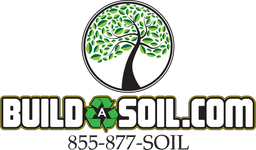How big should my container be?
Thanks to ClackamasCoot for sending me this article, much appreciated.
One of the #1 challenges I have with newer organic growers is that they will many times cut themselves short by using a container that is too small. When you are simply holding the plants roots to feed them nutrient bottles you can grow huge plants out of small containers.... but with organics we are focused on the soil producing all of the bio-mass without any bottled nutrients. That simply means that more soil will go much further and make your life easier. I see the most struggles under 5 gallons and the most success over 5 gallons. So you decide what to do with your space. But if you have more room, I'd suggest going up to 25 gallons or whatever you can still move, and if you don't need to move the pots around consider a Geo-Planter No-Till indoor grow bed!
Okay Rant over, here is the science behind doubling your container size.
Want bigger plants? Get to the root of the matter

|
||||
Plant scientists have imaged and analyzed, for the first time, how a potted plant's roots are arranged in the soil as the plant develops. In this study, to be presented at the Society for Experimental Biology meeting on 30th June, the team has also found that doubling plant pot size makes plants grow over 40% larger.
From their 3-D MRI root scans, the researchers observed that potted plants quickly extend their roots to the pot's walls. It is likely that the plants use their roots to 'sense' the size of the pot, although the details of how the roots relay the message about the pot's size remain the plants' secret.
They also looked at 65 independent studies across a wide range of species including tomato, corn, pine tree, cactus, wheat, and cotton plants, and found that all species reach larger sizes when grown in a bigger pot. On average, doubling pot size allowed plants to grow 43% larger.
Dr Hendrik Poorter (Forschungszentrum Jülich, Germany) who led the study, said: "There has been commercial interest in seeing how small pots can be, but our aim was to see how big a pot needs to be to avoid affecting plant experiments."
The work is relevant for gardeners too. Poorter added, "After this study, I immediately changed the pot size for all the plants I had in my house."
To understand the pot size effect, the scientists looked at various aspects of the plants' growth. They found that the plants in smaller pots grew more slowly because of a decreased rate of photosynthesis. But, looking for causes for the decrease, the scientists ruled out limitations in water and nutrients and did not find any differences in the thickness of the leaves for plants in smaller pots. It is therefore unlikely that the plants use water and nutrient levels to sense the pot size, supporting the possibility that sensing happens another way, such as by the roots.

